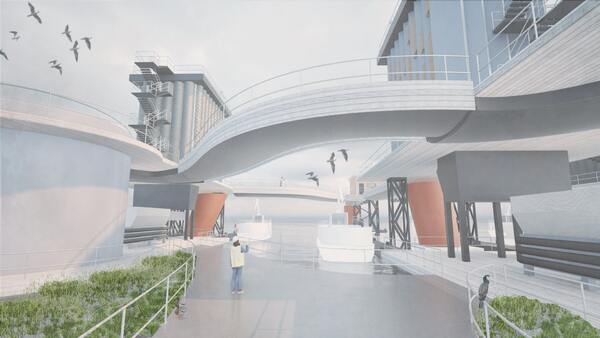The Floating Factory
Based on Windermere waters in Cumbria, the Floating Factory was designed to reimagine the handling of food waste, an issue often overlooked in society. This project, prominently visible on the water, brings the problem to light. It is the culmination of extensive research on policies and specialised machinery used to transform waste into biogas.
The design is driven by the principles of circular economy and "cradle-to-cradle", reducing as much waste as possible. By ensuring that community resources, solid food waste, are utilised, it becomes possible to give back to the same community. The process involves converting waste into biogas through a series of machines. The biogas produced would be used to fuel vessels, which would collect waste from surrounding houses and hotels during the tourist season. This is then mixed and converted into biogas. The residue left in the digester can be sold to farmers who use it to produce food locally. This food is then sold in markets and eventually returned to the same households, providing the floating factory with a continuous supply of waste. In addition, as biogas becomes more widespread in the area, a public fueling station for private boats would be established. This initiative would promote a safer environment for biodiversity, as biogas is a less harmful fuel option.
As the illegal dumping of overflowing sewage is causing the wetlands to disappear and pollution destroys the fragile biodiversity, wetlands are crucial not only as nesting sites, but also for maintaining healthy water quality by filtering the water. By integrating biodiversity into the site, the project aims to respond to its local context, providing habitats for birds in the wetlands and resting places for nocturnal bats.


